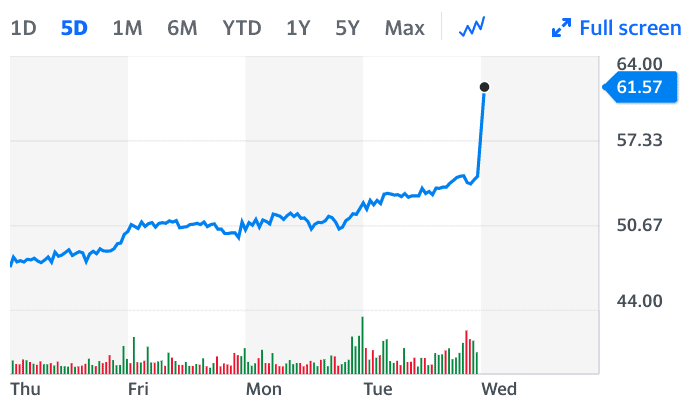Did you see what happened to the price of Aston Martin Lagonda Holdings (LSE: AML) shares this morning, soon after I’d identified it as a potential breakout from price consolidation?

The share price not only shot up, but “gapped up” without passing through the price points in between. How can we find out what caused the price gap?
What causes a price gap?
When the prices of stocks such as Aston Martin and McCarthy & Stone make big moves even before the markets open, it’s usually because some news has driven those morning share price movements. Although you can’t trade the news by anticipating it, unless you have insider information, the stories behind major moves can provide valuable insights into whether those price changes are likely to be permanent.
It’s not always good news, and prices can also gap down. A good example is Wirecard AG, whose share price gapped down in mid-June. The contrarian in me wanted to buy in on the basis that the shares would surely bounce back. However, a review of the news revealed that this banking tech titan’s Asian bank accounts were missing about £1.9bn that couldn’t be accounted for. And it wasn’t the first time that this German company had been subject to negative news relating to some sort of financial scandal. What happened next is that the share price continued to go down, down, deeper and down, thus making my contrarian play impossible.
When I see that a stock’s price has gapped up or down at the start of the day, the first thing I do is Google (or Bing) the stock’s name or ticker symbol to see the stories behind the price move. I use my search engine’s menu option to limit the results to “past 24 hours” to see only the latest stories.
So, what’s the news driving Aston Martin’s morning share price movement?
Now for the moment you’ve all been waiting for: the news behind the Aston Martin Lagonda Holdings morning share price gap-up of about 18.5% from approximately 54p per share to 64p per share.
After market hours yesterday, it was announced that as part of a £1.3bn refinancing package, German car brand Mercedes Benz would increase its current small stake in Aston Martin to 20% by 2023. This long-term tie-up also involves some technology transfer, with James Bond’s favourite motor brand gaining access to Mercedes Benz’s electric transmission systems.
It’s not all good news because the British carmaker also reported a halving of revenues (to £124m) and a loss of £29m compared with a profit of £43m for the same quarter last year. This may have been why the share price fell back nigh-on immediately to almost close the gap, which is what often happens while short-term traders are still deciding what they want to do with the stock.
So, what do I want to do with my Aston Martin shares now? Keep holding, of course, but possibly with my customary stop order to protect some of the profit I’ve accrued.







